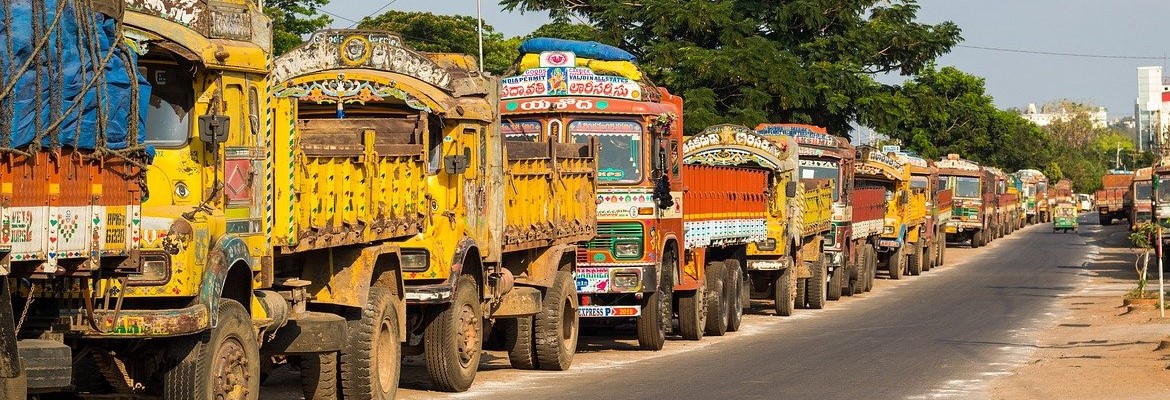One of the most affected and probably transformed sectors by the Covid 19 pandemic was undoubtedly the logistics market.
Post-Covid-19, the global logistics market size is expected to grow from $2.734 billion in 2020 to $3.215 billion in 2021, at a Y-O-Y of 17.6%.
In India, the logistics market is expected to reach around $255 billion by 2022, growing at a CAGR of 10.5%.
The logistics industry in India is highly fragmented, with a large number of unorganised players. Only about 10-15 per cent of the Indian logistics market is owned by organised players.
Even being a disorganised sector, it provides livelihood to over 22 million people and improving the sector will facilitate a 10% reduction in indirect logistics cost, leading to 5-8% growth in exports.

The Ministry of Commerce and Industry estimates that currently, the country spends about 14% of its GDP on logistics, which is much higher than Japan (11%) and the US (9-10%).
During the Union Budget 2020-21, the Indian Government announced that a National Logistics Policy will soon be launched clarifying the roles of the Union Government, State Governments and key regulators. The policy also talks about reducing logistics cost to less than 10% of GDP by 2022.
Most countries are experiencing supply pressure due to panic buying by consumers caused by the COVID-19 impact. As a result, Fast Moving Consumer Goods (FMCG companies) are continuously monitoring the current situation and are coming up with new strategies to ensure continuity of supply.
E-commerce, government reforms and changes in service outsourcing strategies are expected to lead the transformation of the Indian logistics landscape.
While online platforms have increased competition and reduced shipping costs with real-time data availability and a transparent value chain, logistics service providers must innovate and adapt to the changing logistics landscape. There is a real need for innovative logistics solutions to achieve substantial growth forecasts.
According to a Technavio Research Report the third-party logistics market (3PL) in India is set to grow by USD 10.74 billion, progressing at a CAGR of almost 8% during 2021-2025.
Factors such as the introduction of tax reforms and initiatives for 3PL in India, the growth of the e-commerce sector in the country, and increased investments for 3PL start-ups will offer immense growth opportunities.
The challenges experienced during the pandemic highlighted the immediate need to build a stronger and more relevant infrastructure, that can not only withstand unexpected disruptions of this scale but also is agile enough to help adapt and regain efficiency almost immediately in the face of future conflicts.
Delivery like micro-logistics and last-mile are rushing to adapt to this “new normal” after Covid-19, although the decade has already promised major changes in how things are delivered to the last-mile ecosystem. Pandemic has accelerated and will continue to accelerate these changes.
The parcel delivery market is not only large but dynamic, with growth rates ranging from 300% in developing markets like India, against 7% to 10% in mature markets like the US.
Delivery is seeing technological disruption from business models that are trying to meet customer demand to deliver quickly. Some interesting solutions, such as drone delivery and autonomous ground vehicle (AGV) delivery, are likely to grow in the coming years.
New technologies associated with delivery will help unlock the growth potential of the Indian economy. The adoption of last-mile delivery technologies has already been accelerated by the pandemic and will continue to do so as a result, creating a competitive advantage among key industry players.
The EU-India InnoCenter believes that India and Europe can face and overcome many challenges together. The purpose of the InnoCenter is to support European startups as they enter the Indian market, presenting the country’s real needs and opportunities in different verticals.
India is expected to be one of the top three economic powers in the world over the next 10 -15 years, combining a rapidly growing and young population with a highly skilled and English-speaking workforce. Today India is the 3rd largest startup ecosystem in the world and hosts more than 50 unicorns, offering unique advantages and opportunities.
Be a part of this community and have access to a select group of internationalisation specialists, deeply engaged in the Indian and European markets, ready to take you to new levels of business.






